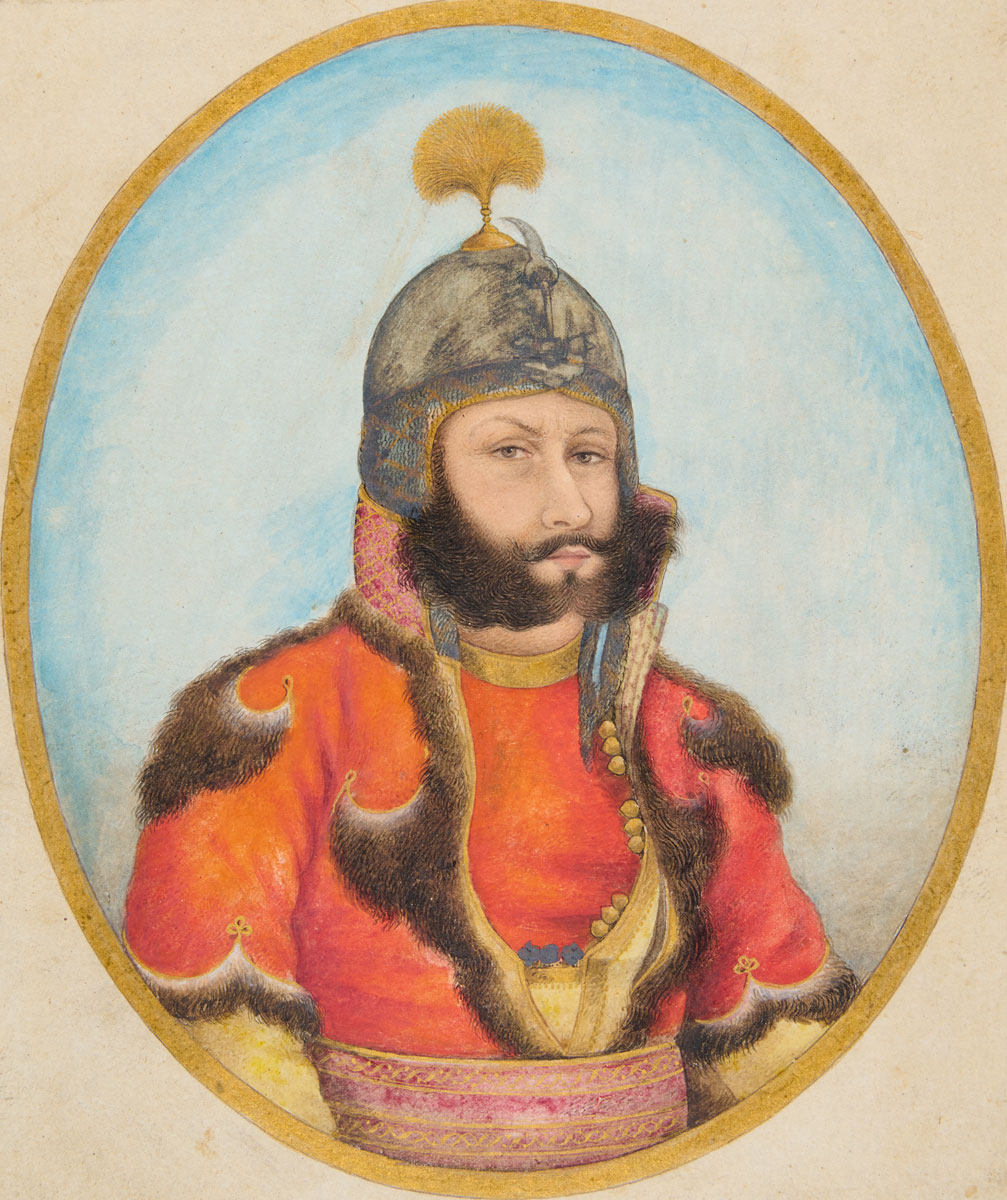
A Trooper of Skinner’s Horse, Attributed to Ghulam Ali Khan, Company School, Delhi, c. 1827, opaque pigments, gold and silver on paper, folio: 17.3 x 13.1 cm, painting: 11.2 x 9.6 cm; Painted oval in gilt-decorated border; Inscribed faintly ‘Sardar Auxiliary (?) Corps’ in English in pencil just above the lower gold ruling; reverse inscribed ‘A Trooper of Col. Skinner’s Horse [Corps]’
We are pleased to feature returning AWNY member, Francesca Galloway, as our Gallery Spotlight this week. Based in London and with forty years of experience and expertise, Francesca Galloway is known as one of the foremost galleries dealing in Indian painting and courtly arts today. Collaborating with the leading scholars in this field, their catalogues and publications are reference works in their own right, helping to advance the research and visibility of this fascinating and important subject. Combining a personal approach with a global outlook, they regularly exhibit internationally with their recent must-see show, Indian Painting: Intimacy and Formality, presented during Asia Week New York.
One of the many exceptional works from their collection is this arresting oval portrait portraying a risaldar (cavalry officer) of the legendary Skinner’s Horse, an identity established both by an English inscription on the reverse and the distinctive uniform of ‘The Yellow Boys’, the moniker given to the contingent of cavalry of 1,000 horsemen first raised by Lt. Colonel James Skinner (1778-1841) in 1803 at Hansi, a town 150 km northwest of Delhi.
The close-up, bust-length format of the painting offers a remarkably detailed account of the soldier’s uniform from the steel Khula Khud, a type of conical helmet, topped with a yellow plume, enhanced with a retractable nasal bar and brass aventail, a kind of mail curtain protecting the brow, sides of the head, and neck, to the reddish-orange jacket trimmed with fierce-looking fur forming dramatic curving shapes along the figure’s shoulder, down his front, and at the split sleeves.
This uniform matches exactly those worn in a well-known darbar painting of 1827 in which Skinner presides the acceptance of a new recruit into his regiment (1). Moreover, since it is known that the Delhi master artist responsible for that painting, Ghulam Ali Khan (active 1817-52), made numerous preparatory studies of the individually labelled officers included in that large scene, it follows that Ghulam Ali Khan created this work as well (2). The individual portrayed here is labelled Amanat Khan risaldar, who is seated at the head of the row of officers on the viewer’s right. Yet for all the obvious appeal of the trooper’s flamboyant uniform, what makes his portrait truly compelling is Ghulam Ali Khan’s ability to capture his subject’s cool, self-assured demeanour. This he achieves by rendering a piercing glance, a haughtily raised eyebrow, and the planes and surface of the face built up by innumerable nuanced touches of the brush.
To learn more about this remarkable painting, click here.
(1) National Army Museum, London 1956-02-27-3. Signed ‘Work of Ghulam Ali Khan painter resident of the Caliphate of Shahjahanabad completed in the Christian year 1827’, the painting is published in William Dalrymple and Yuthika Sharma, eds., Princes and Painters in Mughal Delhi, 1707-1857 (New York: Asia Society, in association with Yale University Press, 2012), cat.58. https://collection.nam.ac.uk/detail.php?acc=1956-02-27-3
(2) For the career of Ghulam Ali Khan, who made many works for James and William Fraser, see J.P. Losty, ‘James Skinner’s Tazkirat al-Umara now digitised’, British Library Asian and African studies blog 07 August 2014; and Yuthika Sharma in Dalrymple and Sharma, eds., 2012, pp. 41-52.
